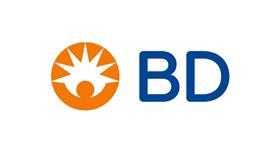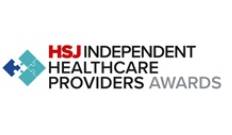How digital medication management will connect us to the hospital of the future sooner
Change is a constant in the NHS, but over the next few years, we will see this play out even more so than normal. How medications flow through the system – from prescription to administration – will need to adapt to cope with the growing pressures on healthcare, increasing safety agenda and bigger societal changes.
BD believes an approach which links up all aspects of medication prescription, storage, dispensing, delivery and administration will help the NHS cope with these changes and ensure patients get the medicines they need in a safe and timely way.
In the future, we expect many more patients will be treated at home – including with medications which only a few years ago used to be administered only in hospital. Increasingly, cancer drugs are being infused at home and during the height of the covid pandemic many patients who received care at home appreciated not having to travel to hospitals and receiving care in an environment which they could control. Reducing footfall in hospitals also helped maintain levels of infection prevention and control.
Sponsored by
A connected medication management process, that extends to the patient’s home, could help deliver medications easily and with the same emphasis and controls on safety which would be expected in the hospital setting. It can reduce some of the pressure on space in healthcare settings, which potentially has cost-saving implications for NHS organisations, and absolutely enhance patient experience.
In almost any scenario for the future of the NHS, getting best value of the resources it has is going to be important. With around two thirds of the NHS’s costs being staffing and shortages of nurses, doctors, pharmacists, and other healthcare professionals likely to continue, making the best use of its people is likely to be a prominent part of this.
Minimising the amount of time which is spent on unnecessary work around medications could offer considerable savings for NHS organisations and free staff up to do tasks which can’t be automated.
Nurses, in particular, spend a considerable part of their shift preparing, delivering and administering medications. This can include calculating the dose needed and drawing it up and frequently checking each other’s work.
Much of this is time which can’t be spent providing holistic care to a patient – which nurses find satisfying and which patients value. Automating some of the processes around medication management delivery could free them up to do more of what they and patients really value.
But it could also reduce the chances of human error leading to a mistake in a patient’s medications. There is plenty of evidence that such mistakes happen frequently and can harm patients – a 2018 study suggested medication errors could contribute to 22,000 deaths a year. Not all of those occur at the point of administration, but human factors play a part in many of them.
The use of pen and paper is still widespread in areas such as aseptic units where some of the costliest and potentially harmful medications used by the NHS are prepared.
Reducing the opportunity for these errors to occur is not only the right thing to do to enhance patient safety but could reduce the burden of compensation which is paid when such errors occur. As the population ages – and people develop more long-term conditions which frequently need lifelong medications – there is a real risk this bill could increase.
A joined-up approach to medication management could help bring down these costs, reducing the likelihood of errors due to human factors such as inaccurate calculations or drawing up the wrong amount.
Many organisations will have bits of the technology which could enable them to do this – such as electronic prescribing and an electronic patient record. But these are only part of the solution – like a jigsaw, these pieces need to be carefully fitted together to give a coherent picture.
BD can offer expertise in how to make the most of the IT you already have to develop connected medication management in your organisation. It’s not just about the technology – it is about implementing these systems and bringing about the changes in organisational culture and practice which can maximise the benefits of more connected medication management. BD also offers training and ongoing support to make the most of the information the system will generate.
And the benefits will extend beyond individual trusts – connected medication management can enable stocks to be tracked across an integrated care system, for example, so they can be moved where they are needed. This could be useful in any future emergency such as a sudden mass vaccination campaign, regional surges in disease, and ensure equity of access across an ICS area.
The future can often appear challenging, but at BD we are determined to do what we can to help NHS organisations not only cope with these changes but use innovation to turn them into positives for patients and professionals.

Connecting MedSafety and efficiency
- 1
 Currently reading
Currently readingConnecting MedSafety and efficiency
- 2
- 3
- 4






























